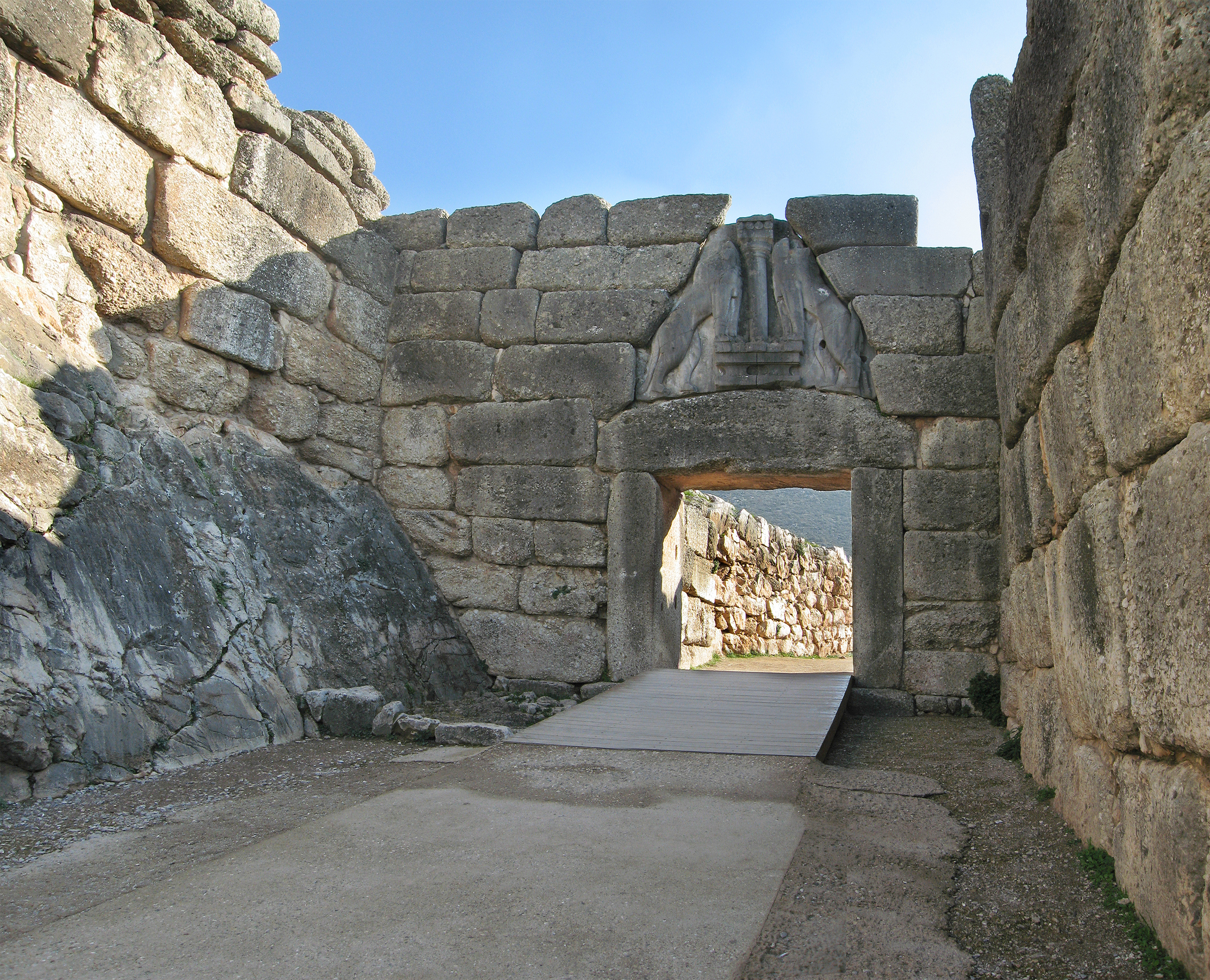|
Greave
A greave (from the Old French ''greve'' "shin, shin armor") or jambeau is a piece of armor that protects the human leg, leg. Description The primary purpose of greaves is to protect the tibia from attack. The tibia, or shinbone, is very close to the skin, and is therefore extremely vulnerable to just about any kind of attack. Furthermore, a successful attack on the shin results in that leg being rendered useless, greatly hampering one's ability to maneuver in any way. Greaves were used to counteract this. They usually consisted of a metal exterior with an inner padding of felt. The felt padding was particularly important because, without it, any blow would transfer directly from the metal plating to the shin. History Bronze Age Bronze greaves were used in Bronze Age Europe by the Mycenaean Greece, Mycenaean Greeks and the Central European Urnfield culture, among others. Ancient Greece and Rome The reference to greaves (Ancient Greek: κνημίδες) exists in various texts of ... [...More Info...] [...Related Items...] OR: [Wikipedia] [Google] [Baidu] |
Shin Guard
A shin guard or shin pad is a piece of equipment worn on the front of an athlete's shin to protect it from injury. These are commonly used in sports including association football, baseball, ice hockey, field hockey, lacrosse, cricket and mountain bike trials. They are also used in combat sports and martial arts competitions including kickboxing, mixed martial arts, taekwondo, karate and professional wrestling. This is due to either being required by the rules/laws of the sport or worn voluntarily by the participants for protective measures. Materials Modern day shin guards are made of many differing synthetic fiber, synthetic materials, including, but not limited to: *Fiberglass, Fibreglass - Stiff, sturdy, and light weight. *Foam rubber - Very light weight, but not as sturdy and solid as fibreglass. *Polyurethane - Heavy and sturdy, which offers almost complete protection from most impacts. *Plastic - Less protective than any of the other synthetic shin guards. *Metal - Hig ... [...More Info...] [...Related Items...] OR: [Wikipedia] [Google] [Baidu] |
Urnfield Culture
The Urnfield culture () was a late Bronze Age Europe, Bronze Age culture of Central Europe, often divided into several local cultures within a broader Urnfield tradition. The name comes from the custom of cremation, cremating the dead and placing their ashes in urns, which were then buried in fields. The first usage of the name occurred in publications over grave sites in southern Germany in the late 19th century. Over much of Europe, the Urnfield culture followed the Tumulus culture and was succeeded by the Hallstatt culture. Some linguists and archaeologists have associated this culture with a Celtic languages, pre-Celtic language or Proto-Celtic language family.Peter Schrijver, 2016, "Sound Change, the Italo-Celtic Linguistic Unity, and the Italian Homeland of Celtic", in John T. Koch & Barry Cunniffe, ''Celtic From the West 3: Atlantic Europe in the Metal Ages: questions of shared language''. Oxford, England; Oxbow Books, pp. 9, 489–502. By the end of the 2nd millennium BC, ... [...More Info...] [...Related Items...] OR: [Wikipedia] [Google] [Baidu] |
Schynbalds
Schynbalds were an early experiment in plate armour for the lower leg. Schynbalds were metal plates strapped over chausses. Each schynbald was a single piece of steel that covered the front and outside of the shin. Schynbalds did not enclose the lower leg: hence, they were not true greave A greave (from the Old French ''greve'' "shin, shin armor") or jambeau is a piece of armor that protects the human leg, leg. Description The primary purpose of greaves is to protect the tibia from attack. The tibia, or shinbone, is very close to ...s. Schynbalds first appeared in the 1230s or 1250s and remained in use during the fourteenth and fifteenth centuries.Gravett, Christopher. ''English Medieval Knight 1200-1300''. Oxford: Osprey Pub, 2002. Print. Complete suits of armor survive only from the latter part of the schynbald era. In fifteenth century Gothic armour they were strapped not to mail but to fastenings on a padded undergarment. By the early fifteenth century greaves had ... [...More Info...] [...Related Items...] OR: [Wikipedia] [Google] [Baidu] |
Suneate
''Sangu'' is the term for the three armour components that protected the extremities of the samurai class of feudal Japan. Description Traditional Japanese armour had six main components (''hei-no-rokugu, roku gu, or roku gusoku''), the dou or dō (chest armour), kabuto (helmet), mengu (facial armour), kote (armoured sleeves), sune-ate (shin armour), and the hai-date (thigh armour). The sangu was composed of the ''suneate'' (shin armour), ''kote'' (armored sleeves), ''haidate'' (thigh armour). These armour components were a combination of a cloth backing and various types of armour that was attached to the cloth backing. On an original authentic suit of Japanese armour (gusoku) the cloth backings, edgings, decorations etc. and the armour elements would all be matching to each other. Sangu File:Sangu 1.JPG File:Sangu 2.JPG Parts of the sangu Kote Kote (籠手, ''armored sleeves''). These sleeves are usually of textile material, often silk brocade, padded, laced with the small c ... [...More Info...] [...Related Items...] OR: [Wikipedia] [Google] [Baidu] |
Goliath
Goliath ( ) was a Philistines, Philistine giant in the Book of Samuel. Descriptions of Goliath's giant, immense stature vary among biblical sources, with texts describing him as either or tall. According to the text, Goliath issued a challenge to the Israelites, daring them to send forth a champion to engage him in single combat; he was ultimately defeated by the young shepherd David, employing a Sling (weapon)#Biblical accounts, sling and stone as a weapon. The narrative signified Saul, King Saul's unfitness to rule, as Saul himself should have fought for the Kingdom of Israel (united monarchy), Kingdom of Israel. Some modern scholars believe that the original slayer of Goliath may have been Elhanan, son of Jair, who features in 2 Samuel 21:19, in which Elhanan kills Goliath the Gittite, and that the authors of the Deuteronomist#Deuteronomistic history, Deuteronomistic history changed the original text to credit the victory to the more famous figure David. The phrase "#Mod ... [...More Info...] [...Related Items...] OR: [Wikipedia] [Google] [Baidu] |
Greaves Denda - Inv 4330 (Staatliche Antikensammlungen, Munich, Germany)-transparent
Greaves may refer to: *Greave A greave (from the Old French ''greve'' "shin, shin armor") or jambeau is a piece of armor that protects the human leg, leg. Description The primary purpose of greaves is to protect the tibia from attack. The tibia, or shinbone, is very close to ..., armour that protects the leg (military) * Greaves (crater), a lunar crater near the southwest edge of Mare Crisium * Greaves (food), an edible by-product of the rendering process * Greaves (surname), people with the surname See also * Greeves (other) * Grieves (other) {{disambiguation ... [...More Info...] [...Related Items...] OR: [Wikipedia] [Google] [Baidu] |
Mycenaean Greece
Mycenaean Greece (or the Mycenaean civilization) was the last phase of the Bronze Age in ancient Greece, spanning the period from approximately 1750 to 1050 BC.. It represents the first advanced and distinctively Greek civilization in mainland Greece with its palatial states, urban organization, works of art, and writing system.. The Mycenaeans were mainland Greek peoples who were likely stimulated by their contact with insular Minoan Crete and other Mediterranean cultures to develop a more sophisticated sociopolitical culture of their own. The most prominent site was Mycenae, after which the culture of this era is named. Other centers of power that emerged included Pylos, Tiryns, and Midea in the Peloponnese, Orchomenos, Thebes, and Athens in Central Greece, and Iolcos in Thessaly. Mycenaean settlements also appeared in Epirus, Macedonia, on islands in the Aegean Sea, on the south-west coast of Asia Minor, and on Cyprus, while Mycenaean-influenced settlements appear ... [...More Info...] [...Related Items...] OR: [Wikipedia] [Google] [Baidu] |
English Apocalypse Manuscripts
Illustrated Apocalypse manuscripts are manuscripts that contain the text of Revelation or a commentary on Revelation and also illustrations. Most of these Apocalypses were written between 1250 and 1400. The English Apocalypses are part of a larger group of Apocalypses called: the Anglo-Norman Apocalypses. These manuscripts can be divided by the language and form of the Apocalypse text. Many manuscripts have a Latin Latin ( or ) is a classical language belonging to the Italic languages, Italic branch of the Indo-European languages. Latin was originally spoken by the Latins (Italic tribe), Latins in Latium (now known as Lazio), the lower Tiber area aroun ... text, others have an Anglo-Norman prose text and others have a French verse text combined with a Latin text. Two manuscripts do not have a separate text, but incorporate excerpts from the text into the illustrations. The illustrations can be divided into several iconographic groups. Paul Meyer and Léopold Delisl ... [...More Info...] [...Related Items...] OR: [Wikipedia] [Google] [Baidu] |
Gaiters
Gaiters are garments worn over the shoe and bottom of the pant or trouser leg and used primarily as personal protective equipment, in particular against snakebite. They are also commonly used to keep the bottom of the pant-leg dry when hiking in snow. Similar garments used primarily for display are spats. Originally, gaiters were made of leather or canvas. Today, those for walking are commonly made of plasticized synthetic cloth such as nylon or polyester. Gaiters for use on horseback continue to be made of leather. They are made to cover the gap between the pants and boots, rising to just below the knee, and usually have drawcords for tightening. Wearing gaiters, while preventing most snake bites, does not provide complete protection. Common materials for leg gaiters on the market are canvas, nylon, Cordura, Kevlar, and leather. Nylon is better at preventing snakebite than polyester, canvas, or Cordura. Military origins and terminology Beginning in 1700, most infantry i ... [...More Info...] [...Related Items...] OR: [Wikipedia] [Google] [Baidu] |
Morgan Bible
The Morgan Bible (mostly Morgan Library & Museum, New York, Ms M. 638), also called the Morgan Picture Bible, Crusader Bible, Shah Abbas Bible or Maciejowski Bible, is a unique medieval illuminated manuscript. It is a picture book Bible consisting of 46 surviving folios. The book consists of miniature paintings of events from the Hebrew Bible, set in the scenery and costumes of thirteenth-century France, and depicted from a Christian perspective. It is not a complete Bible, as it consists largely of illustrations of stories of kings, especially King David. The illustrations are now surrounded by text in three scripts and five languages: Latin, Persian, Arabic, Judeo-Persian, and Hebrew. The level of detail in the images and the remarkable state of preservation of the work make it particularly valuable to scholars. Forty-three folios are in the Morgan Library & Museum in New York City, with two folios in the Bibliothèque nationale de France (MS nouv. acq. lat. 2294). A single ... [...More Info...] [...Related Items...] OR: [Wikipedia] [Google] [Baidu] |
Thrace
Thrace (, ; ; ; ) is a geographical and historical region in Southeast Europe roughly corresponding to the province of Thrace in the Roman Empire. Bounded by the Balkan Mountains to the north, the Aegean Sea to the south, and the Black Sea to the east, it comprises present-day southeastern Bulgaria (Northern Thrace), northeastern Greece (Western Thrace), and the European part of Turkey (East Thrace). Lands also inhabited by ancient Thracians extended in the north to modern-day Northern Bulgaria and Romania and to the west into Macedonia (region), Macedonia. Etymology The word ''Thrace'', from ancient Greek ''Thrake'' (Θρᾴκη), referred originally to the Thracians (ancient Greek ''Thrakes'' Θρᾷκες), an ancient people inhabiting Southeast Europe. The name ''Europe'' (ancient Greek Εὐρώπη), also at first referred to this region, before that term expanded to include its Europe, modern sense. It has been suggested that the name ''Thrace'' derives from the na ... [...More Info...] [...Related Items...] OR: [Wikipedia] [Google] [Baidu] |







